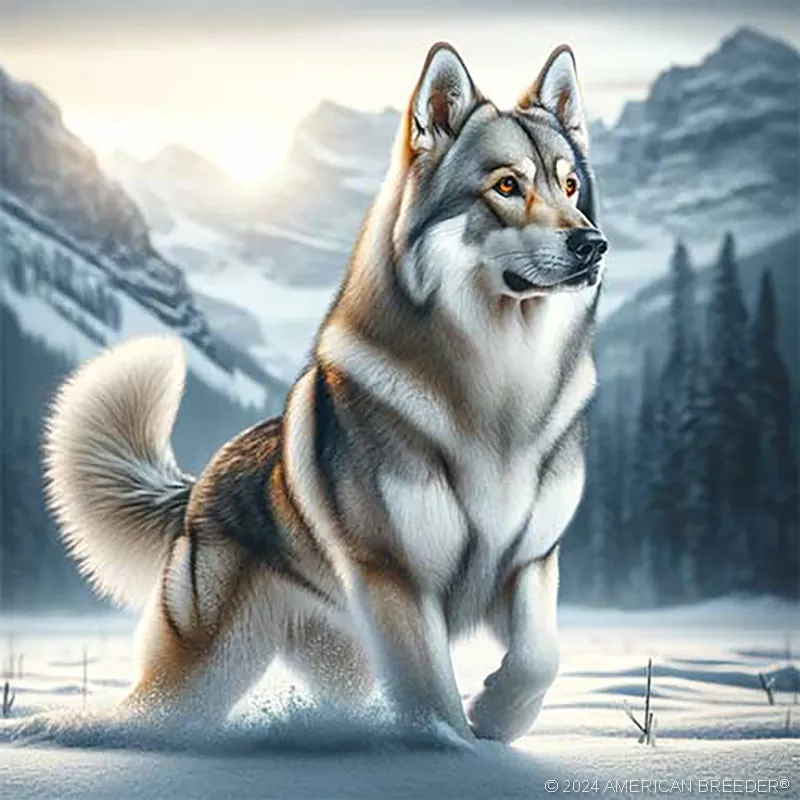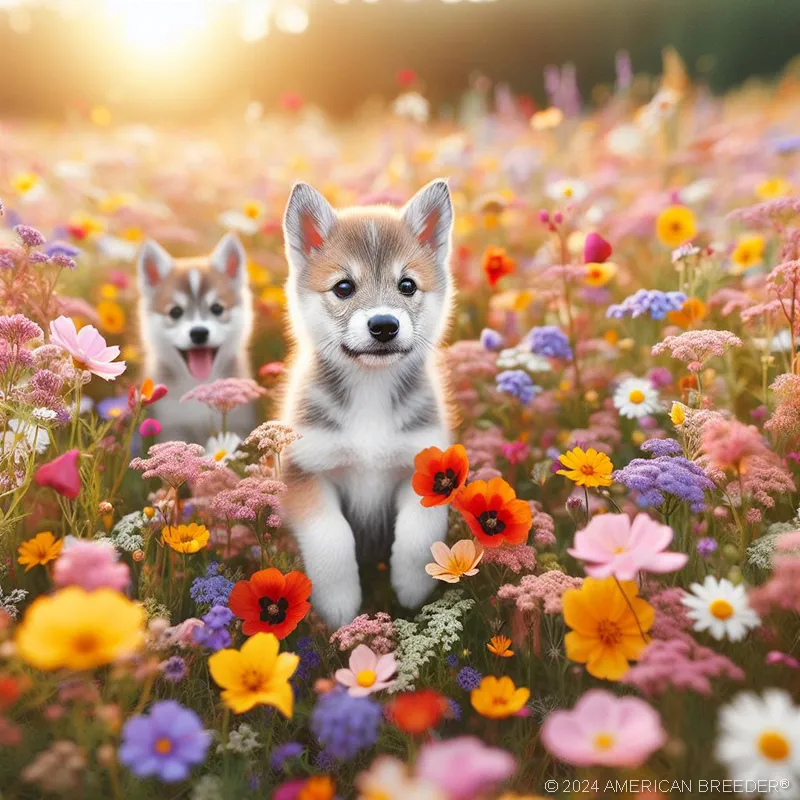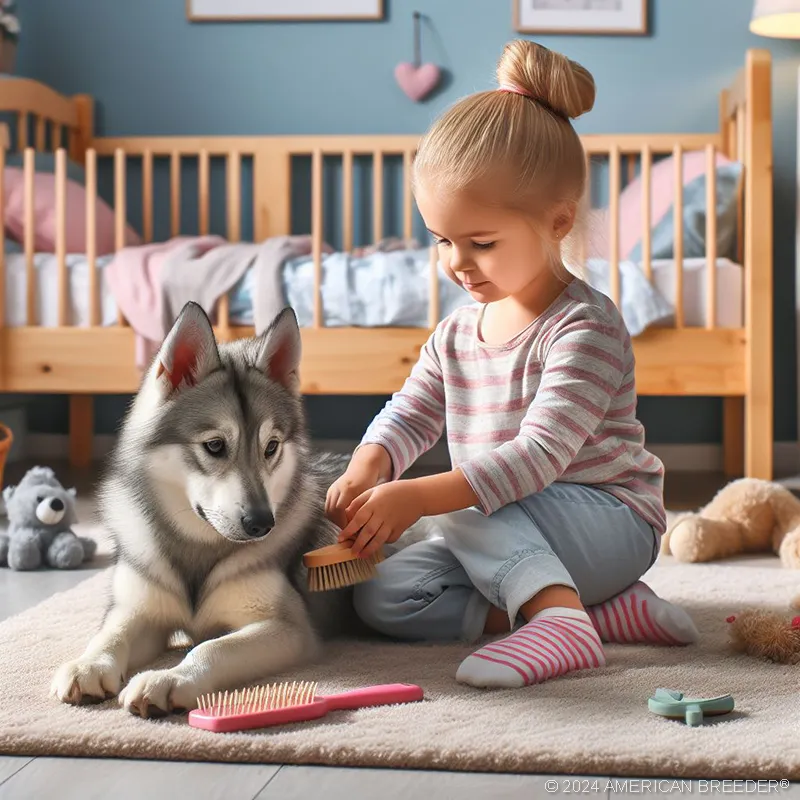Mastering Ownership of the Czechoslovakian Vlcak Dog
If you're looking for a unique and fascinating dog breed, the Czechoslovakian Vlcak Dog should definitely be on your radar. This breed, also known as the Czechoslovakian Wolfdog, is a captivating combination of the domestic dog and the Carpathian wolf. Before bringing this majestic creature into your life, there are a few things to consider. But fear not, because in this comprehensive guide, we'll cover everything you need to know about the Czechoslovakian Vlcak Dog, from its background and characteristics to its care, training, and compatibility with different lifestyles.
Breed Background and History
The Czechoslovakian Vlcak Dog originated in the 1950s when the Czechoslovakian military conducted an experiment to create a working dog with the qualities of a wolf. The aim was to develop a breed suitable for military and border patrol work. By crossing German Shepherds with Carpathian wolves, they successfully achieved their goal and created a new breed. This breed gained recognition in 1982 as a distinct breed, and today it is treasured for its beauty, intelligence, and loyalty.
Breed Characteristics
The Czechoslovakian Vlcak Dog is a medium to large-sized breed, standing about 24 to 26 inches tall at the shoulder and weighing between 44 to 57 pounds for females and 57 to 65 pounds for males. Its physical appearance is striking, with a strong and muscular build, a long, wedge-shaped head, and almond-shaped eyes that exude intelligence. The breed's coat is thick and double-layered, with a wolf-like appearance. Colors can range from yellow-gray to silver-gray, and some individuals may have a characteristic mask on their face.
This breed is known for its independent and spirited nature. The Czechoslovakian Vlcak Dog is highly intelligent, which can make training a rewarding experience. However, they also have a strong prey drive and a natural instinct for guarding and protecting, so early and consistent socialization is essential. They are loyal and devoted to their families, forming strong bonds, but they can be reserved with strangers. The breed has moderate energy levels and requires regular exercise and mental stimulation to thrive.
Trainability and Intelligence
The Czechoslovakian Vlcak Dog is an intelligent and trainable breed. They have a keen ability to learn quickly and excel in various activities, including obedience, agility, and tracking. Positive reinforcement training techniques work best with this breed, as they respond well to praise and rewards. Mental stimulation is crucial to prevent boredom, and providing them with challenging tasks and puzzles will keep their minds sharp and engaged.
Health and Care
Overall, the Czechoslovakian Vlcak Dog is a healthy breed with no major breed-specific health issues. However, responsible breeders should conduct health tests to ensure the long-term well-being of the puppies. Their average lifespan is around 12 to 15 years, but with proper care and nutrition, they can live even longer. The breed's dense coat requires regular brushing to prevent matting and to maintain its natural luster. Bathing should be done when necessary to keep them clean and odor-free. Regular exercise is essential for this active breed, and providing mental stimulation through interactive games and toys will help satisfy their intelligence.
 Socialization and Compatibility
Socialization and Compatibility
Proper socialization is crucial for the Czechoslovakian Vlcak Dog. Early exposure to different people, animals, and environments will help them become well-rounded and confident adults. While they can form strong bonds with children, it is important to supervise interactions, especially with younger children, due to their energetic and boisterous nature. With proper introductions and socialization, the Czechoslovakian Vlcak Dog can coexist peacefully with other pets. However, their strong prey drive may make it necessary to monitor their interactions with smaller animals.
Living Arrangements and Environment
The Czechoslovakian Vlcak Dog is a versatile breed that can adapt to different living arrangements. While they can live in apartments, they thrive in homes with a securely fenced yard where they can have space to roam and play. Keep in mind that they have high energy levels and require regular exercise, so providing them with ample opportunities for physical activity is essential. This breed is well-suited to various climates but may require additional precautions in extreme weather conditions.
Training and Obedience
Training the Czechoslovakian Vlcak Dog should start early and be consistent. Basic obedience training is crucial to establish boundaries and ensure they become well-behaved members of the family. This breed's intelligence and problem-solving abilities make them suitable for advanced training and specialized activities such as search and rescue, scent work, and even competitive obedience trials. It is important to note that they can be independent thinkers, so patience and positive reinforcement techniques are key to successful training.
When considering the Czechoslovakian Vlcak Dog, it's important to factor in the financial aspects of dog ownership. The initial costs may include adoption fees or purchase price, vaccinations, spaying/neutering, and microchipping. Ongoing expenses include high-quality dog food, grooming supplies, regular veterinary check-ups, training classes, toys, and other supplies. It is also wise to consider pet insurance or set aside a budget for unexpected medical costs to ensure the well-being of your furry companion.
Responsible Ownership and Ethical Considerations
Responsible ownership of a Czechoslovakian Vlcak Dog entails making ethical choices when obtaining a dog. Consider adopting from shelters or rescues, as there may be Czechoslovakian Vlcak Dogs in need of loving homes. If you choose to go through a breeder, research and choose a reputable breeder who prioritizes the health and temperament of their dogs, and who conducts appropriate health tests. It is essential to avoid supporting puppy mills and unethical breeding practices.
Legal Responsibilities and Regulations
Owning a Czechoslovakian Vlcak Dog comes with legal responsibilities. It is important to understand and comply with licensing requirements and local regulations for dog ownership in your area. Familiarize yourself with leash laws, vaccination requirements, and other legal obligations to ensure you are a responsible and law-abiding dog owner.
Fortunately, there are numerous resources available to support Czechoslovakian Vlcak Dog owners. Local veterinarians, trainers, and grooming services can provide professional assistance and guidance. Online communities, forums, and educational materials are also valuable sources of information for breed-specific advice and support. Books, websites, and reputable sources can offer further research for those who want to delve deeper into understanding this unique breed.
Conclusion
In conclusion, the Czechoslovakian Vlcak Dog is an extraordinary breed that combines the qualities of a domestic dog with the allure of a wolf. Their intelligence, loyalty, and beauty make them a captivating choice for the right owner. However, it's important to consider their unique needs and characteristics before bringing one into your life. By being a responsible and committed owner, providing proper care, training, and socialization, you can enjoy a wonderful and fulfilling bond with your Czechoslovakian Vlcak Dog.
Czechoslovakian Vlcak Dog Quick Reference Guide
Breed Background: Origin: Czechoslovakia | Breed Purpose: Working Dog, Military Use | AKC Class: Foundation Stock Service | Year Recognized by AKC: Not yet recognized
Appearance: Size: Medium-Large | Weight: 44-57 lbs (20-26 kg) | Coat Type: Double Coat, Straight and Dense | Colors & Patterns: Wolf Gray, Yellow, Silver-Gray | Distinctive Features: Wolf-Like Appearance, Erect Ears, Bushy Tail
Temperament: Energy Level: 5 | Loyalty: 5 | Friendliness to Pets: 3 | Friendliness to Strangers: 3 | Trainability: 4 | Playfulness: 4 | Frequent Barker: 2 | Chase Instincts: 4 | Sense of Smell: 3 | Drive to Hunt: 4
Health & Care: Health Issues: Generally Healthy | Lifespan: 12-16 years | Grooming Difficulty: Moderate | Exercise Needs: High
Socialization: Interaction with Children: Cautious, Better with Older Kids | Interaction with Pets: Moderate | Interaction with Strangers: Reserved | Elderly Compatibility: Not Ideal | Ease of Training: Moderate
Suitable Living Arrangements: Apartment: No | House: Yes | Rural Area: Preferred | Yard Size Requirements: Medium to Large Yard
Training & Obedience: Trainability: 3 | Intelligence: 4 | Obedience: 3 | Problem-Solving: 4 | Easily Stimulated: 4 | Focus Level: 3 | Easily Distracted: 3
Financial Planning: Typical Price Range: $800 - $1500 | Initial Expenses: Training, Supplies | Ongoing Annual Expenses: Food, Veterinary Care
Breeding: Reproductive Maturity: 18-24 months | Litter Frequency: 1-2 litters per year | Litter Size: 6-8 puppies | Stud Cost: $1000 - $2000 | Breeding Challenges: Limited gene pool, careful socialization required
Did You Enjoy this Article? Share it and Help Us Spread the Word!
If you found this article helpful, we'd appreciate it if you could share it with your friends or link to it from your website, blog, or group! You can also use the convenient social share tabs on the left side of the screen to instantly share this page to your social media feed. For more ways to support and promote the American Breeder Community, visit our Share & Promote Together page for social media posts and memes you can copy and share. Your support means the world to us!
Disclaimer: The information provided in this article is for general informational purposes only and does not constitute legal, medical, financial, or professional advice. While we strive for accuracy, we make no representations or warranties regarding the completeness, accuracy, reliability, or suitability of the information. Please consult with a professional before making decisions based on the content provided. American Breeder Inc. assumes no responsibility for any errors or omissions or for the results obtained from the use of this information.




